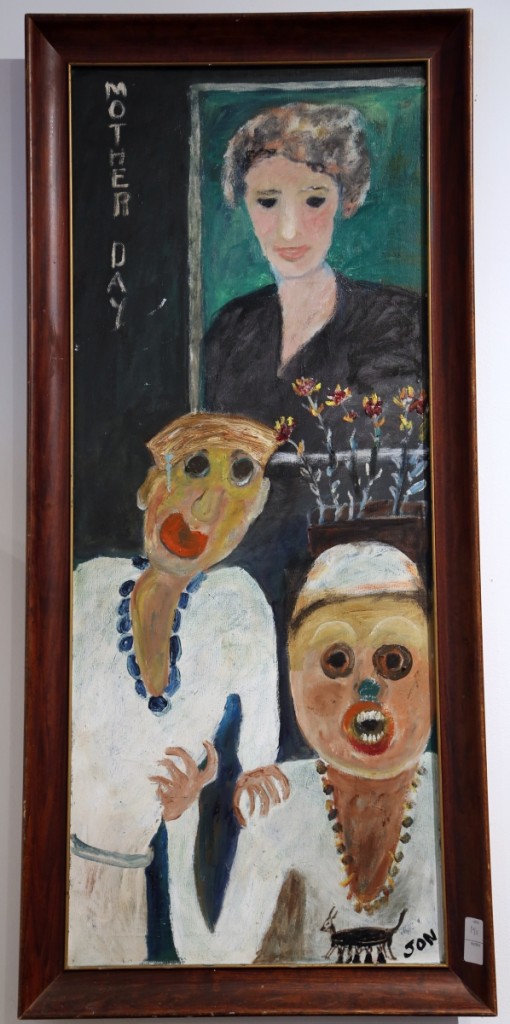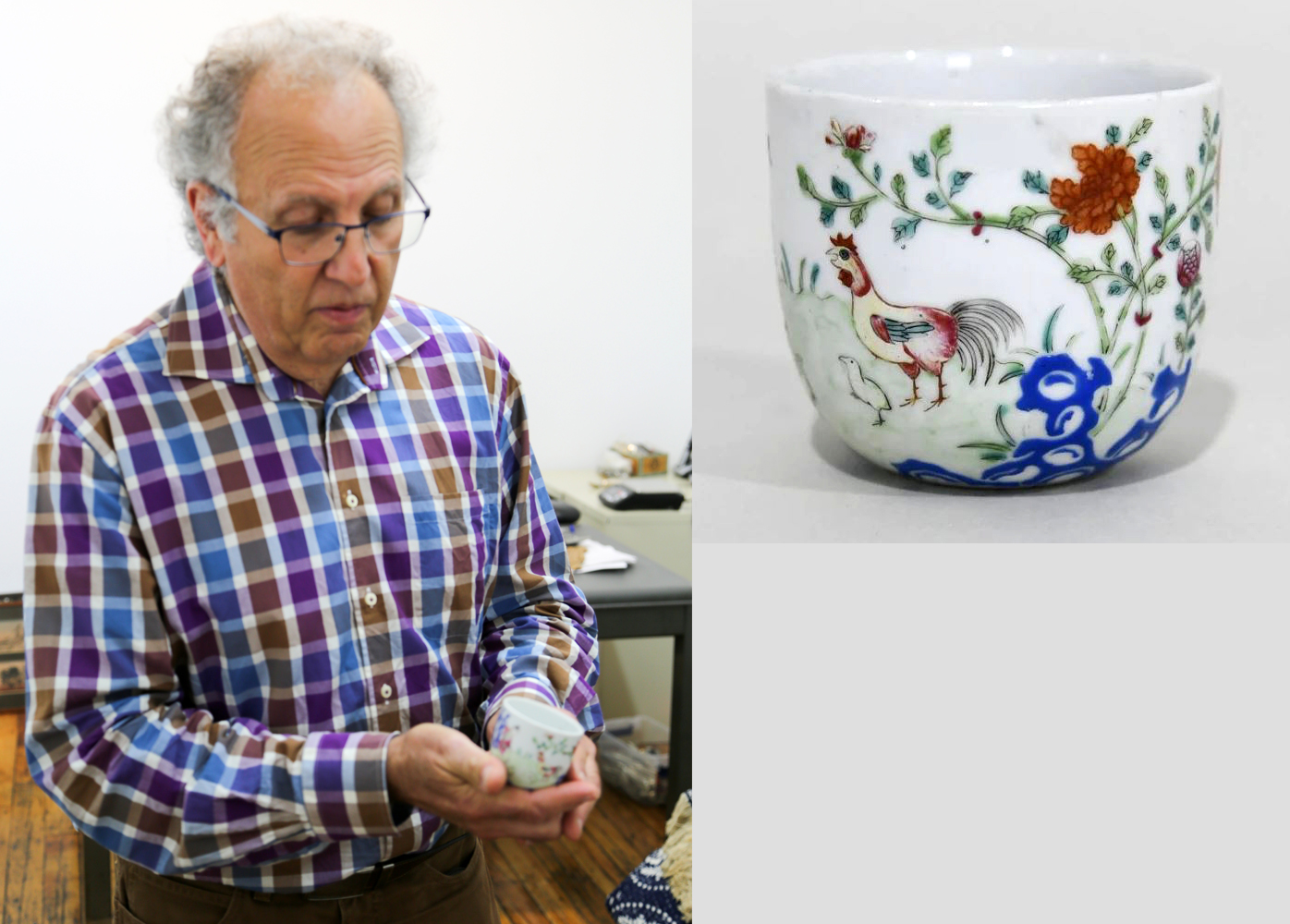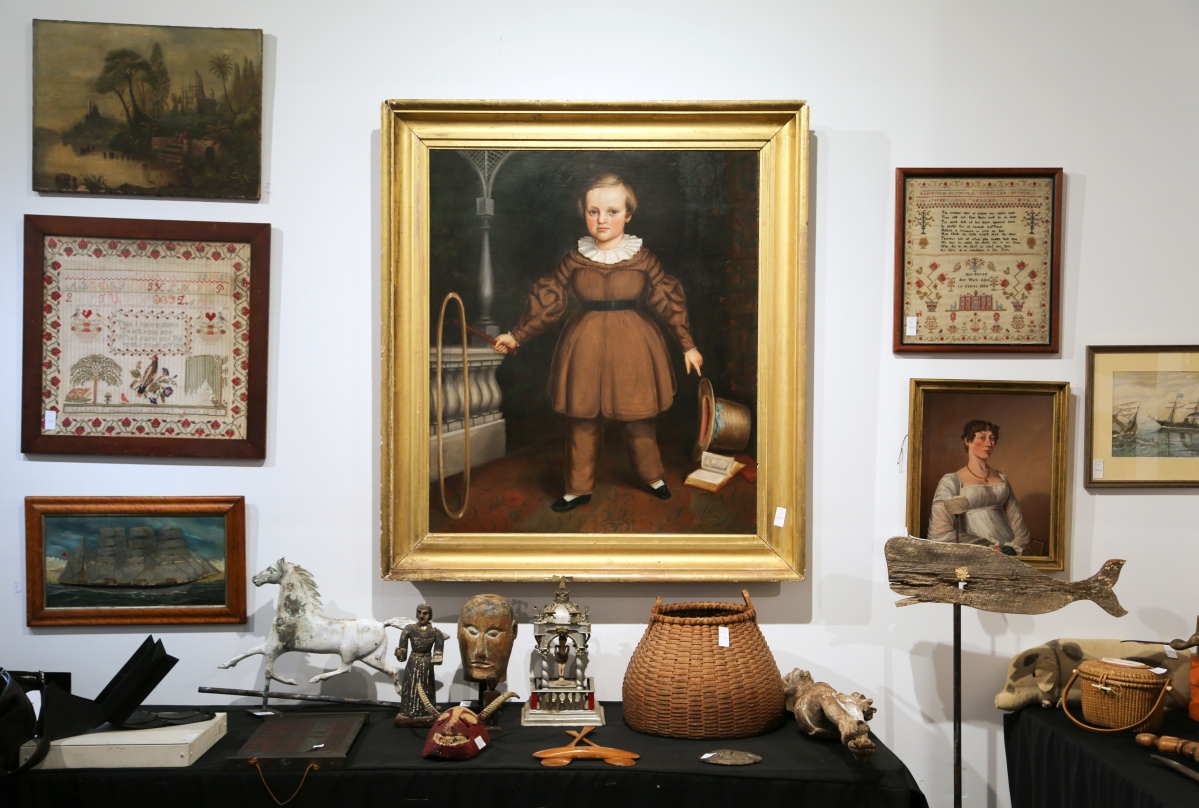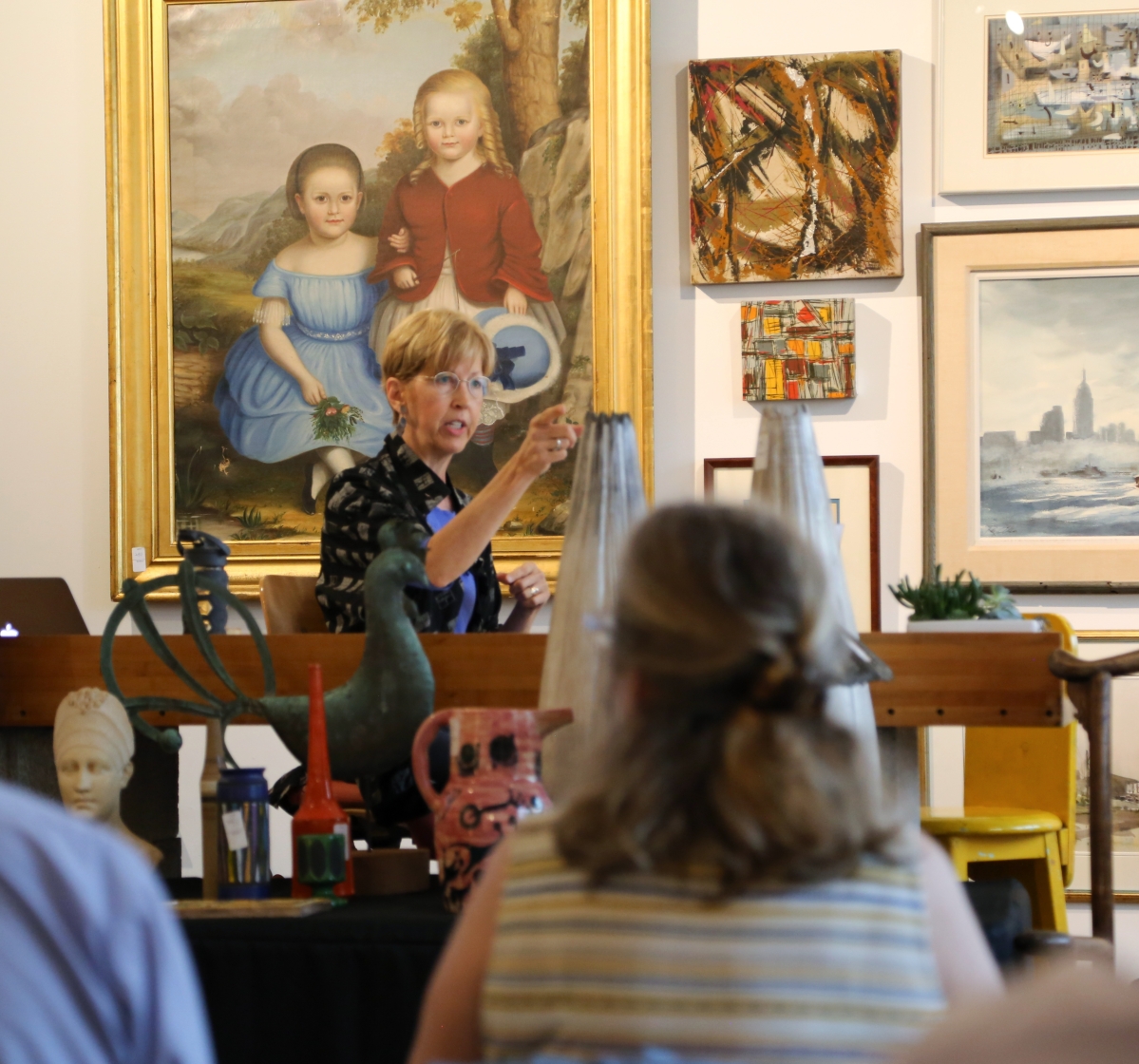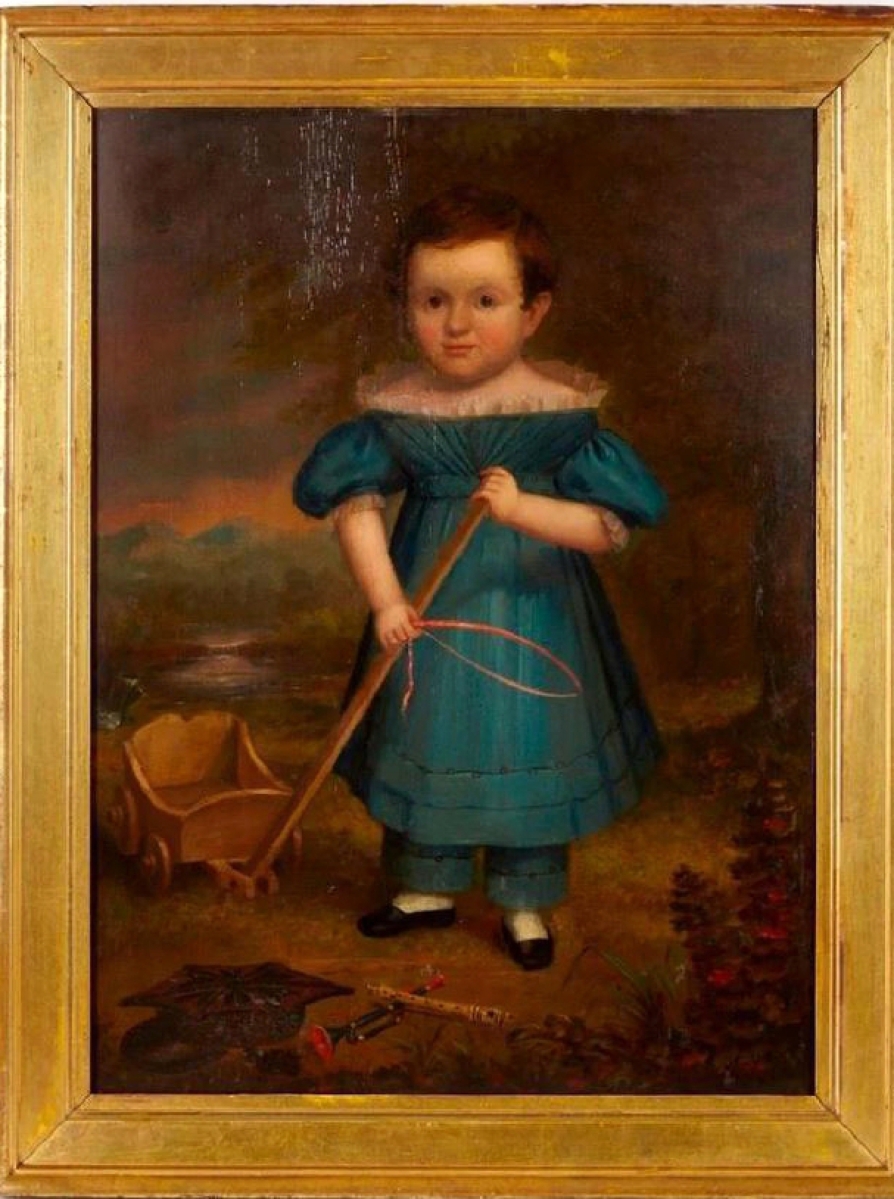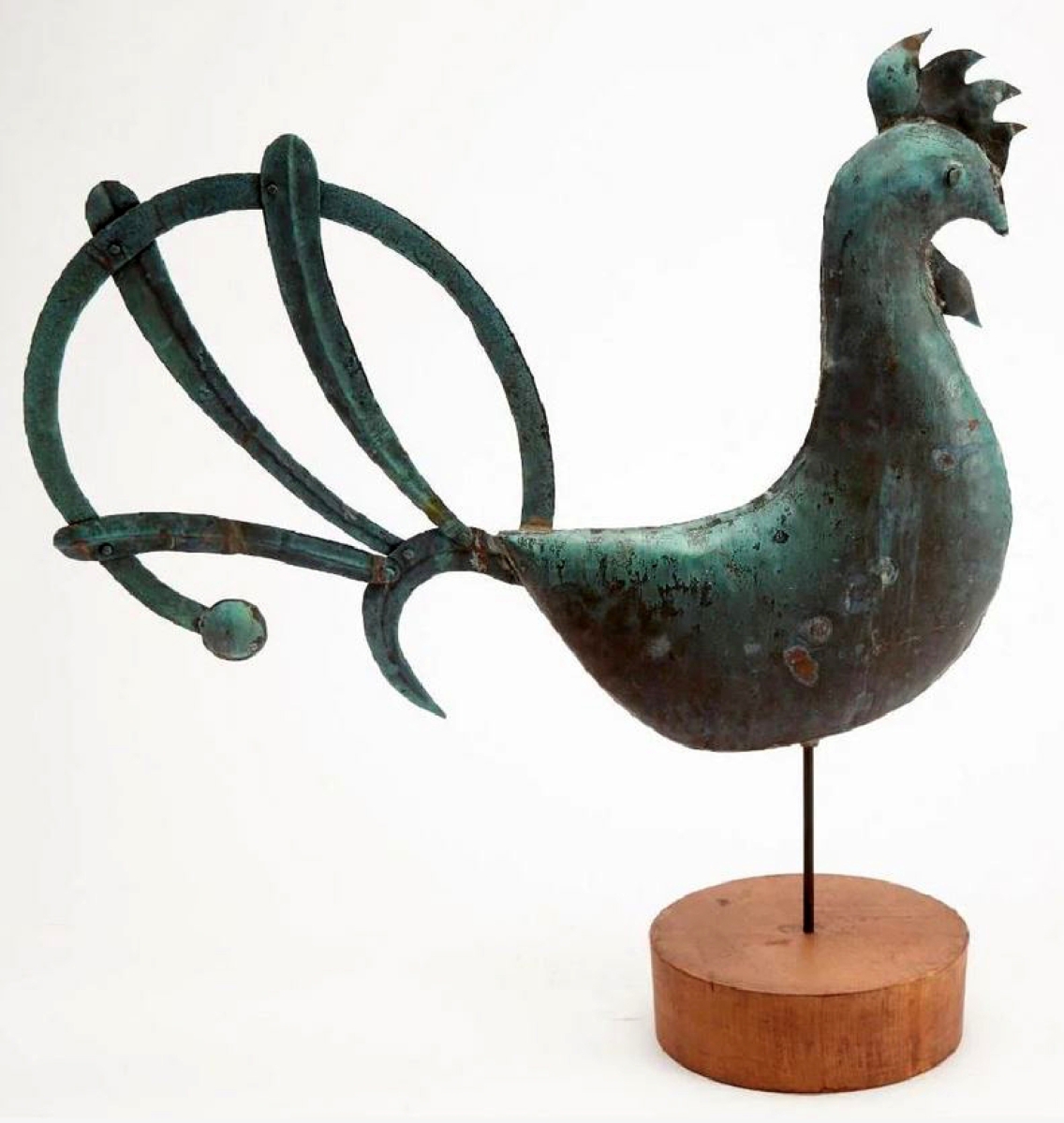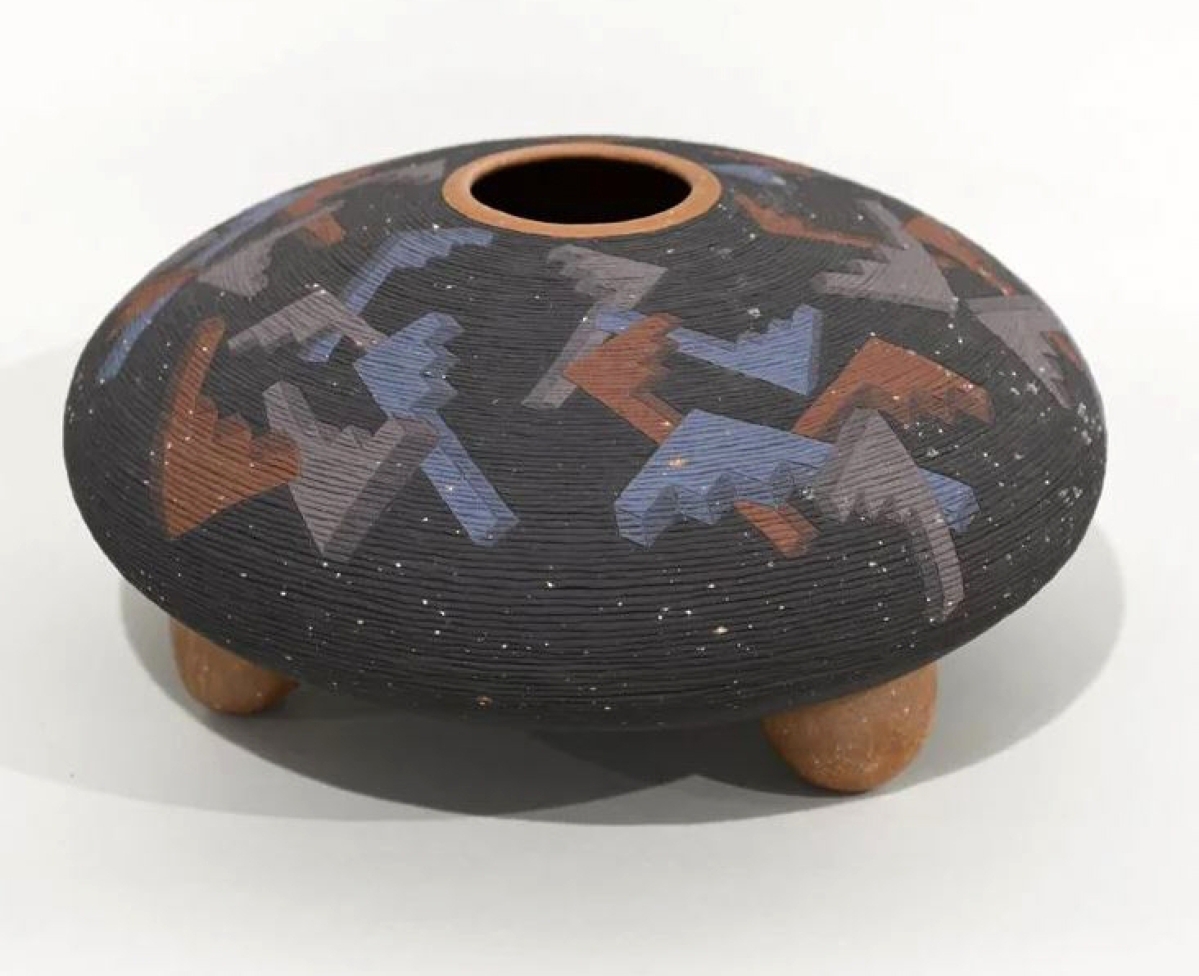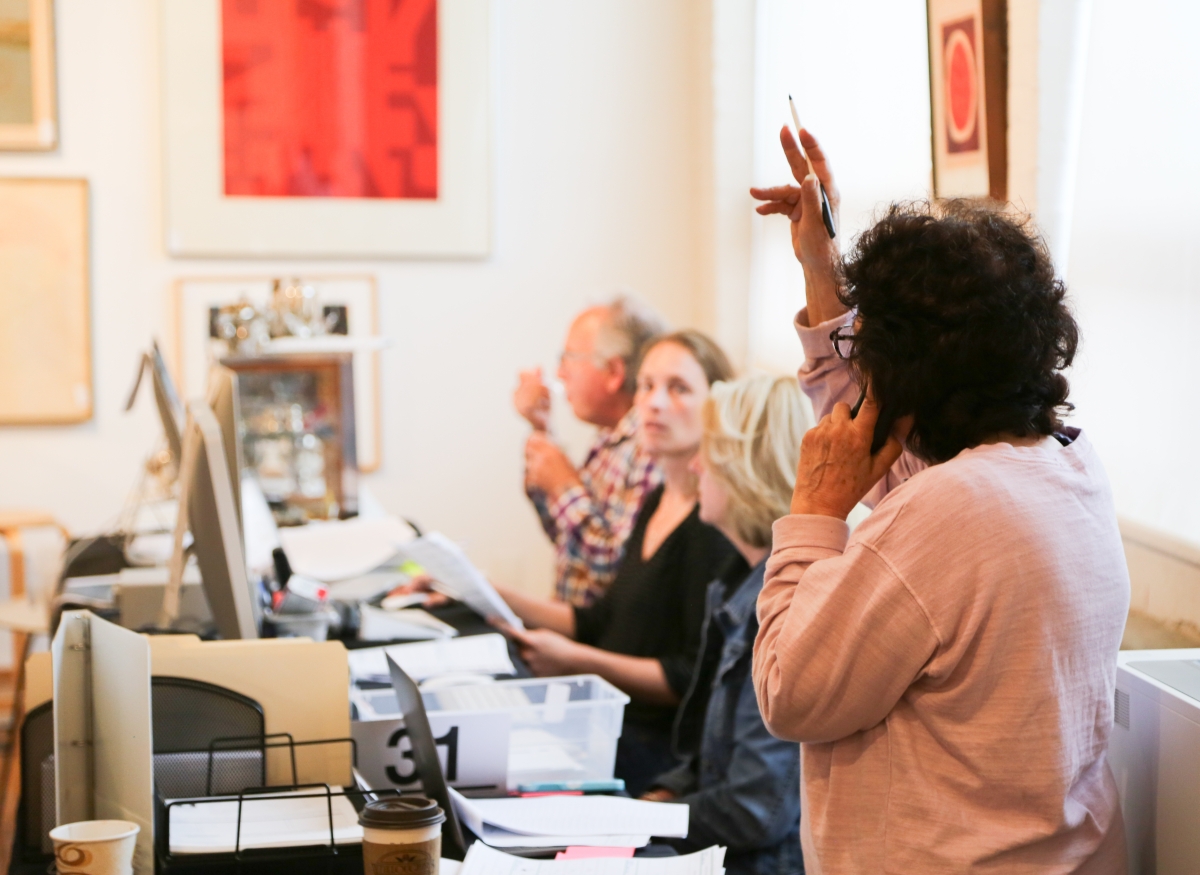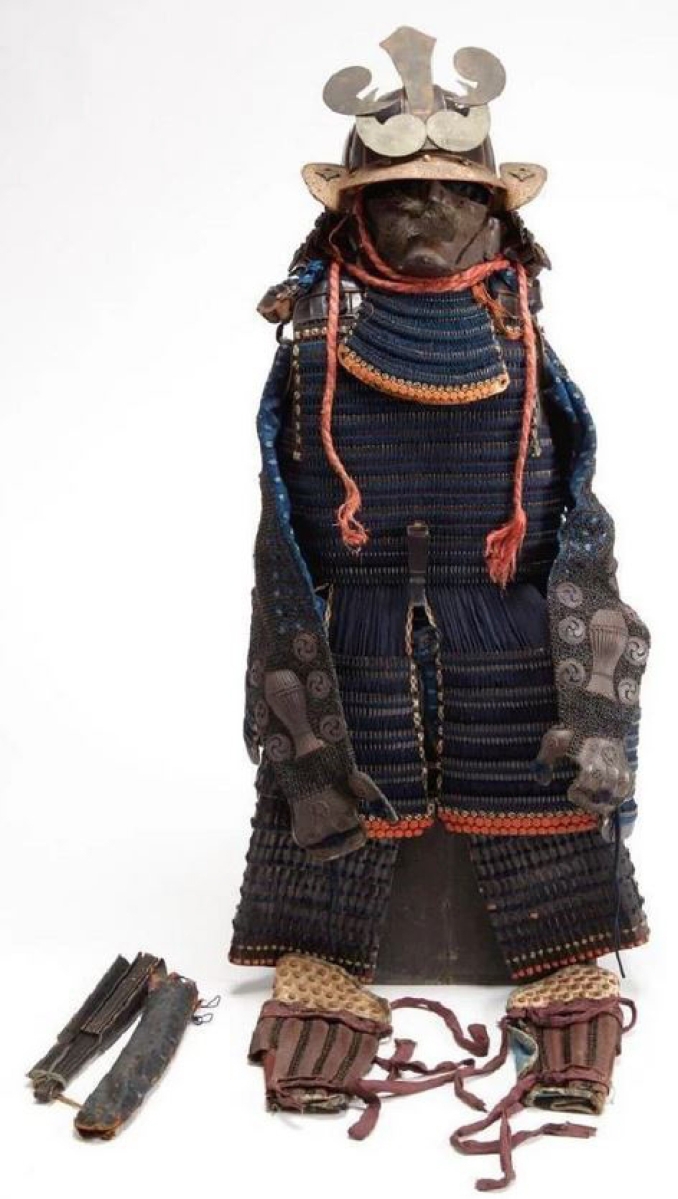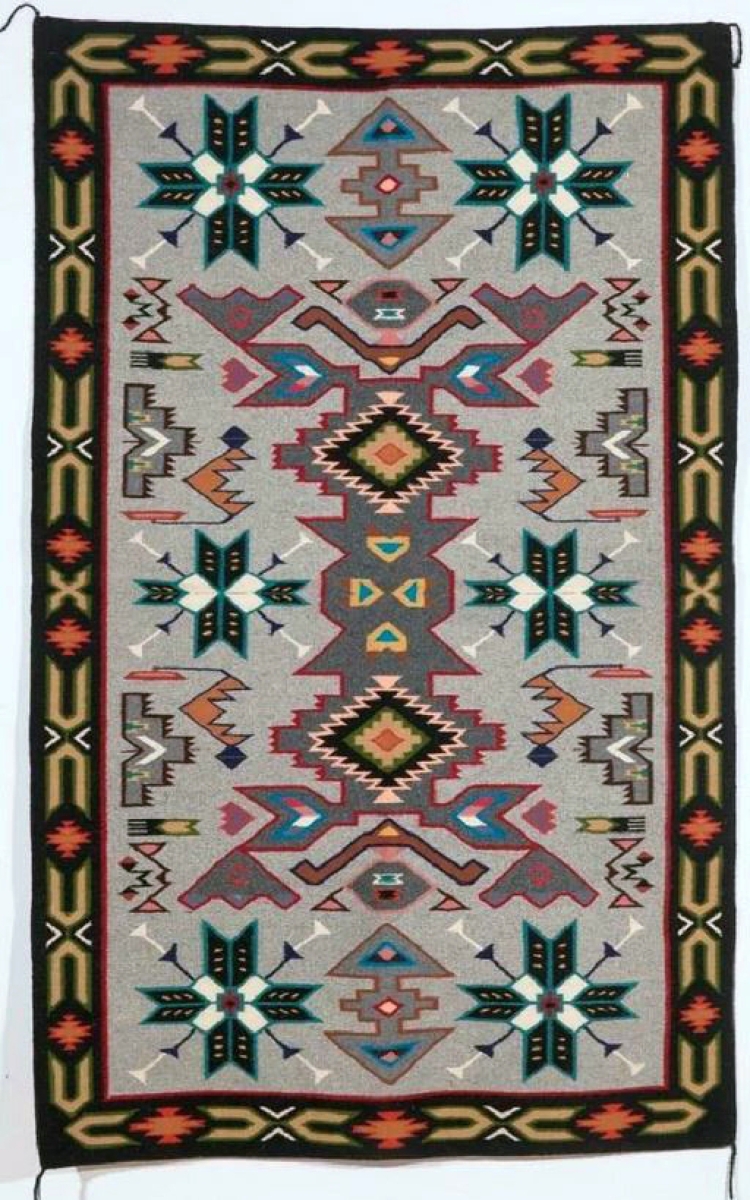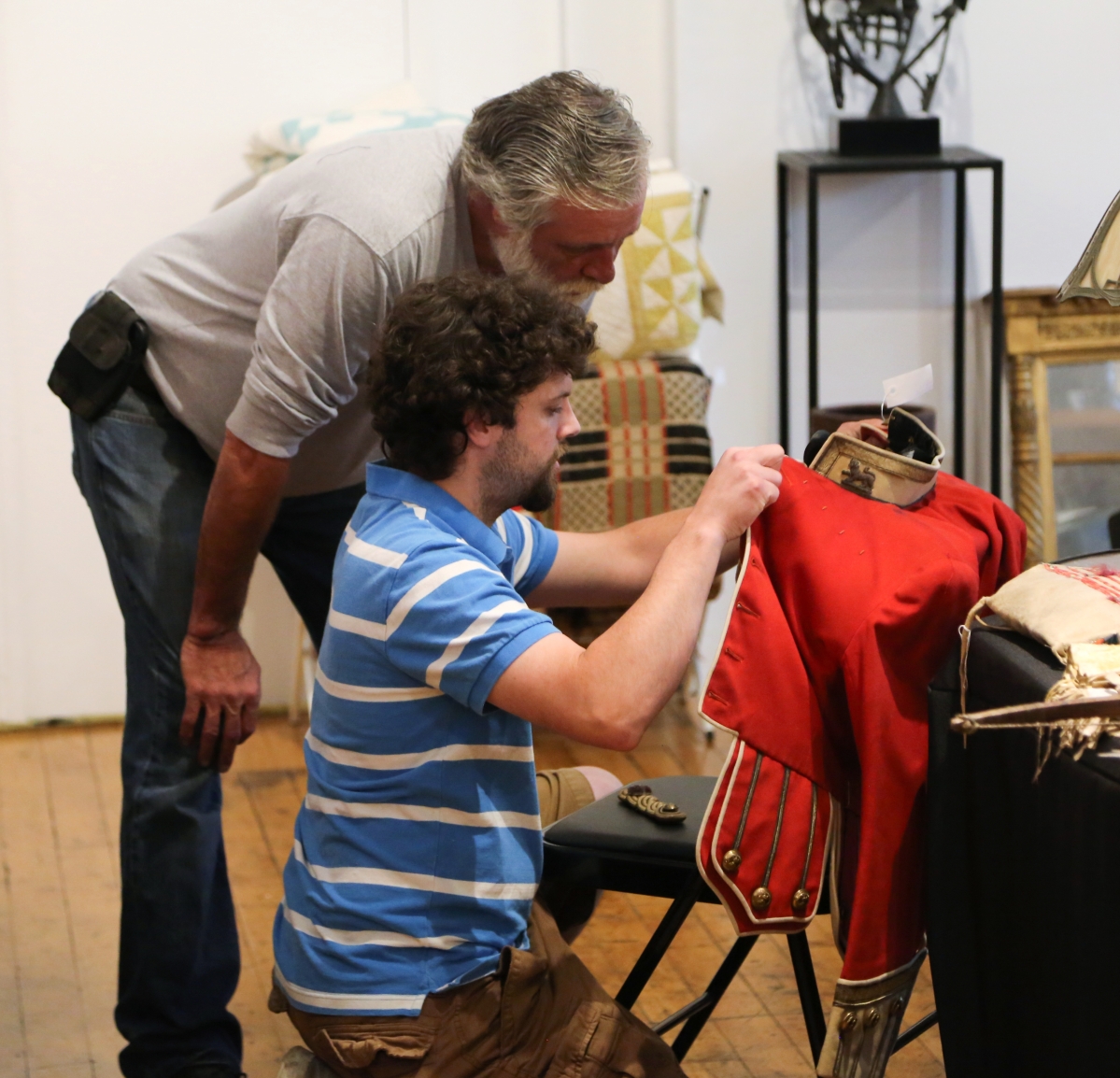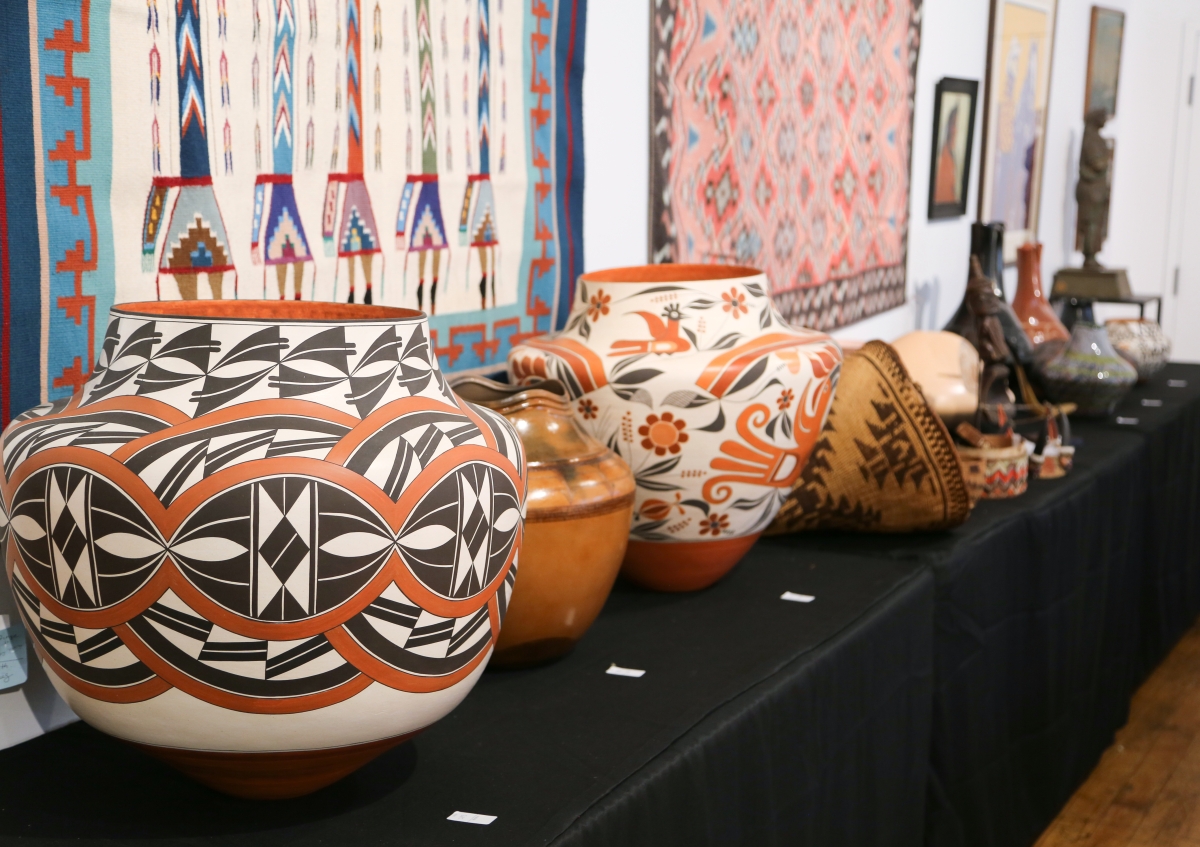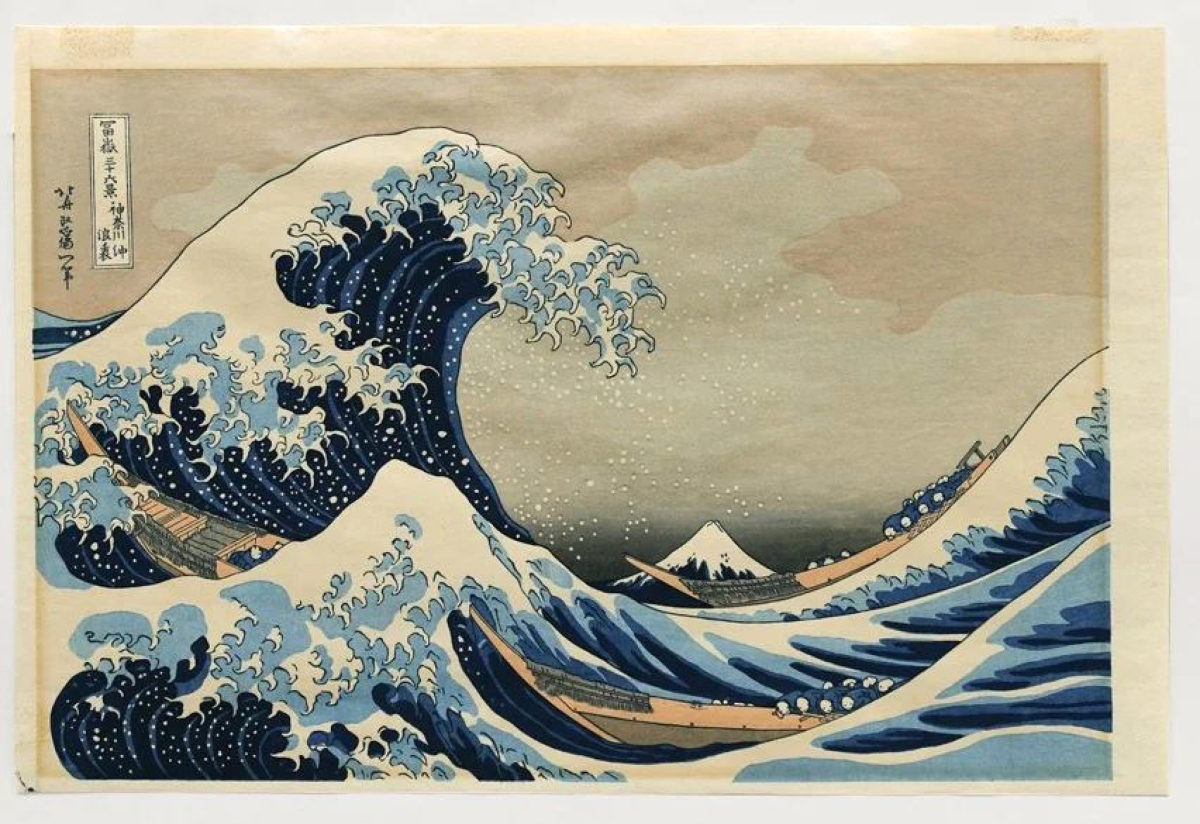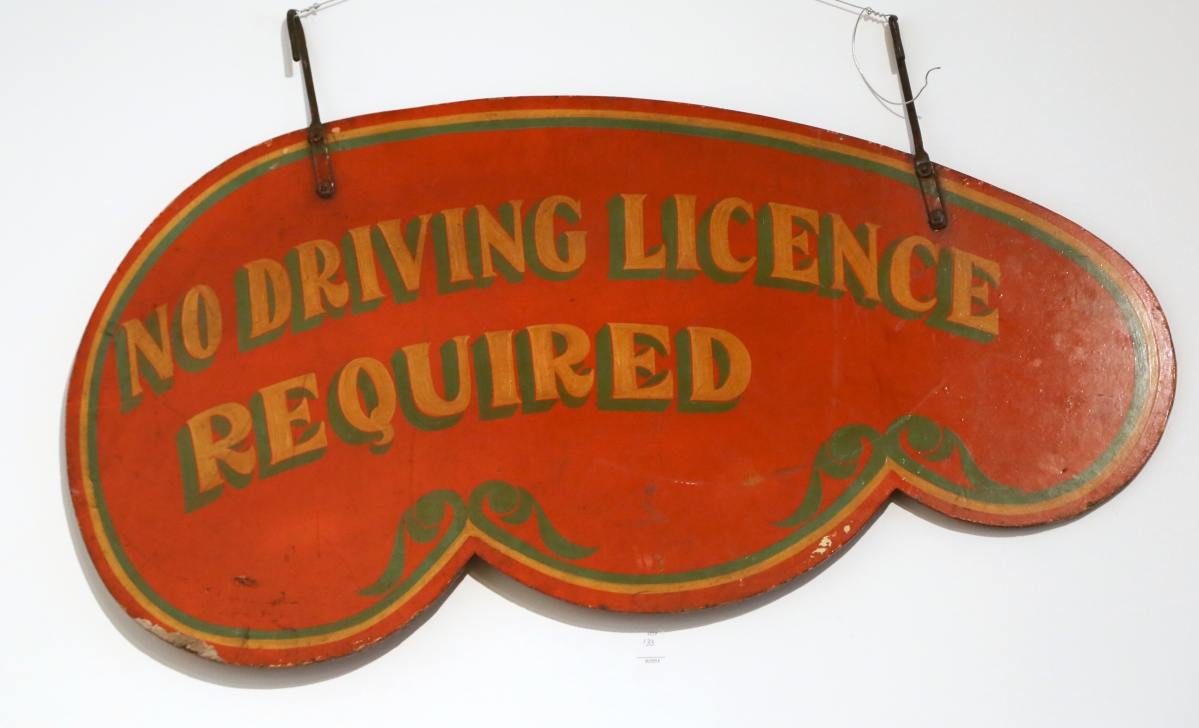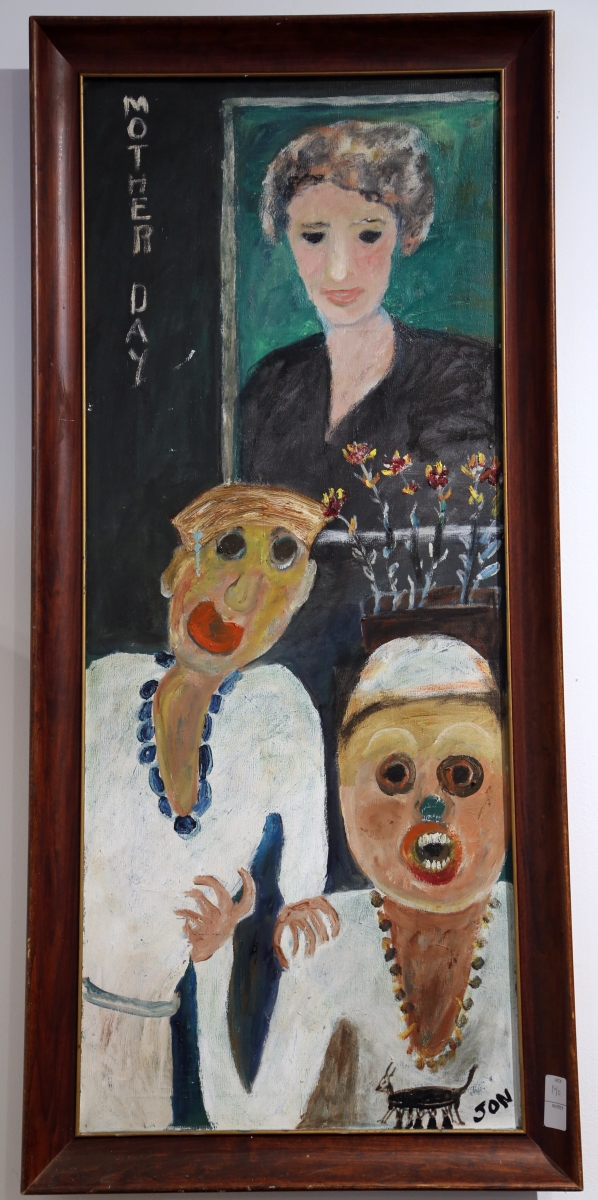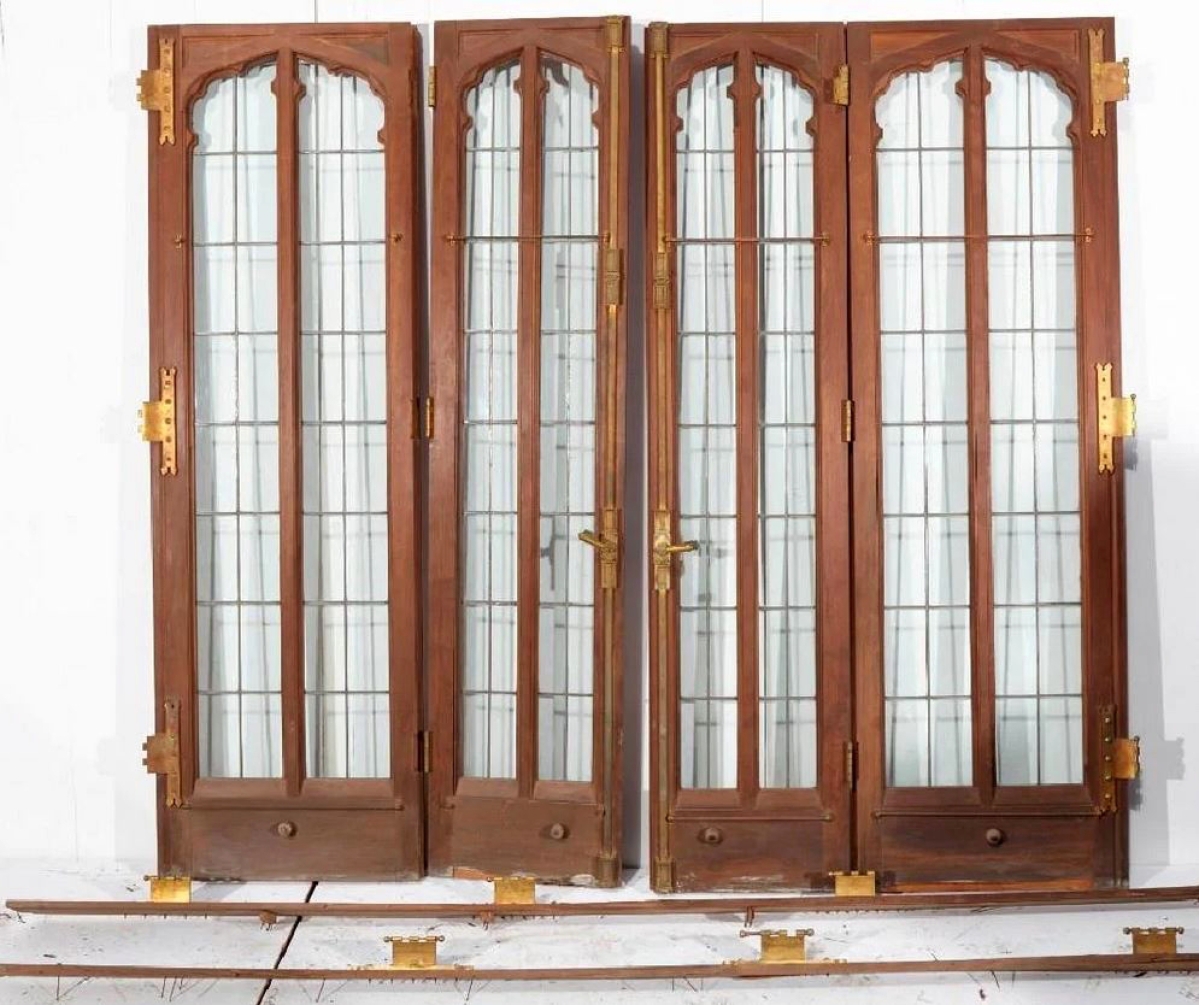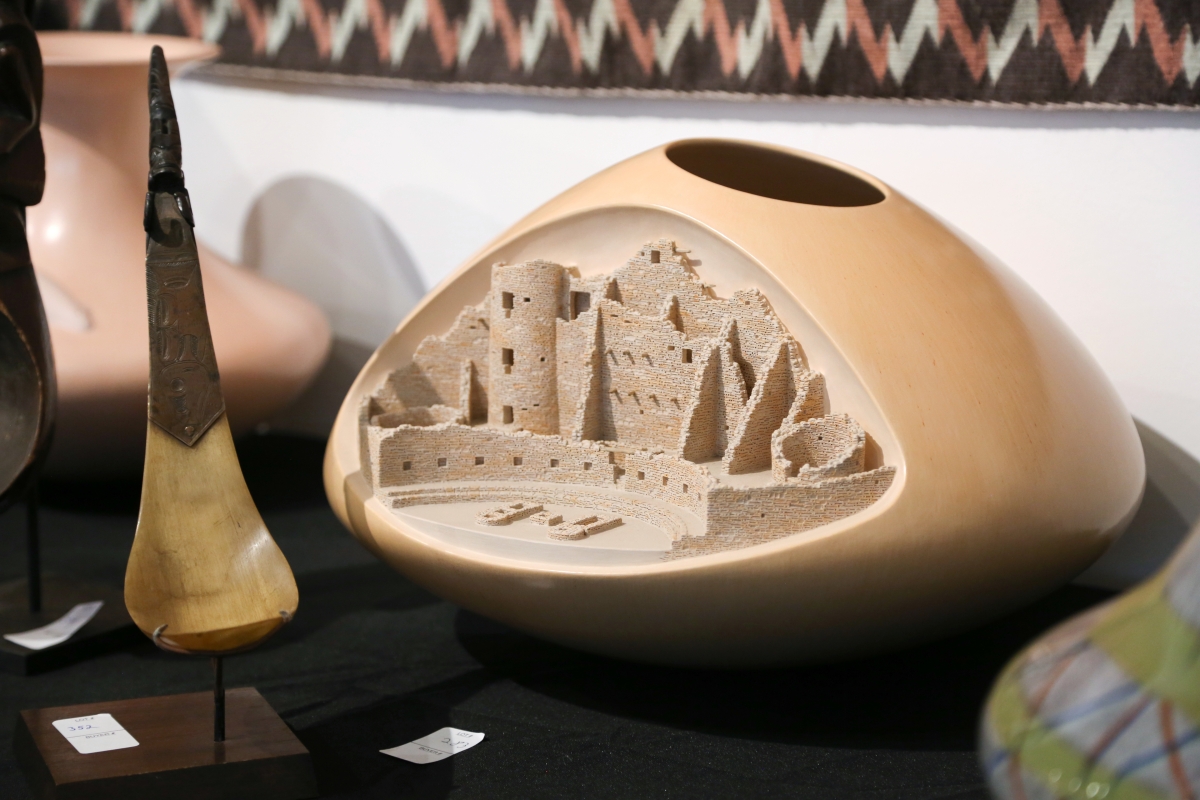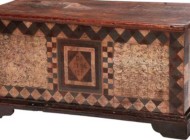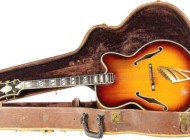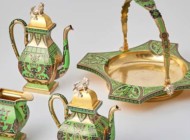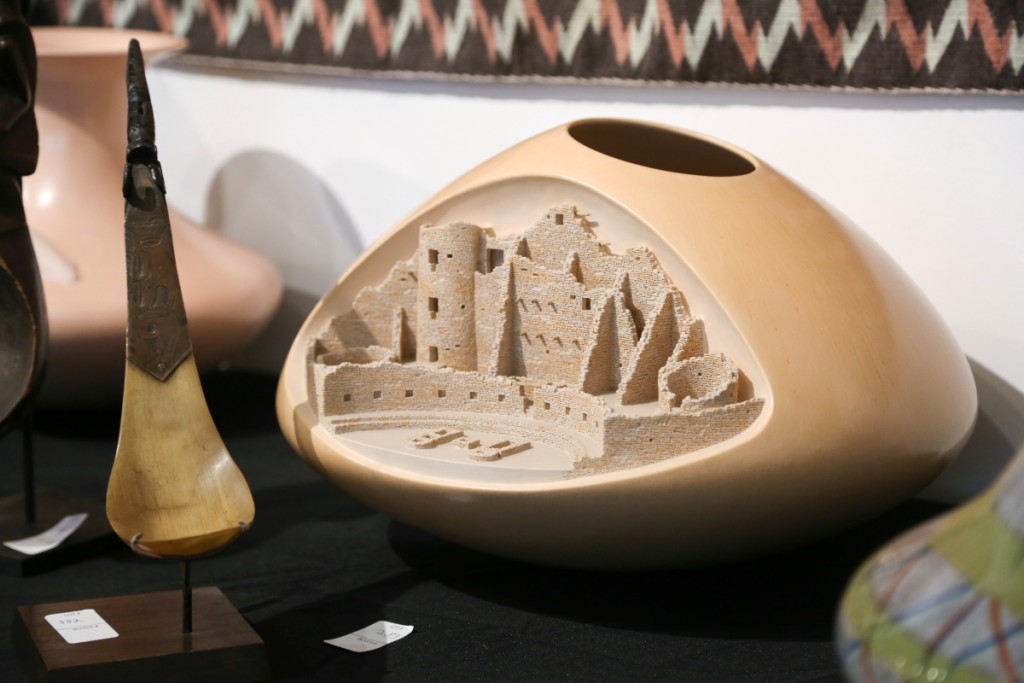
The top lot of the auction was this architectural pottery jar from Hopi potter and sculptor Al Qoyawayma. The work measured 17 inches diameter, was in flawless condition and went out at $10,000.
Review and Onsite Photos by Greg Smith, Catalog Photos Courtesy of New Haven Auctions
NEW HAVEN, CONN. – New Haven Auctions conducted its third sale June 20 with an offering that included pieces local to the New Haven area mixed with those created in each of the four hemispheres.
“It’s virtually exclusively from estates,” owner Fred Giampietro said before the sale got underway. “I try to curate and accept things that I like, just as I would in the antique business.”
Giampietro’s sales thus far have traveled along veins of collecting, worn paths of mixed-interest that he has both dealt into and been a witness to collector awareness therein. These lead to a synergy in fields: certain folk art objects that a collector of African carvings might like, sculptural Native American works to go along with it, and so forth.
“I’m taking the tools I learned as a dealer and expanding that, and the breadth of that, to other things besides Americana,” he said.
There hasn’t been a dominant estate auction in New Haven since Joseph Pari operated one in nearby Hamden, and that is proving to be a good thing for Giampietro.
“It’s interesting being in a college town, particularly one where people traveled and collected and have generations of being here,” Giampietro said. “It’s an interesting time. Estates are turning over.”
With Kathy Giampietro auctioneering at the block, the auction went about 95 percent sold and grossed approximately $250,000.
The sale began with 46 lots of architectural items from the Frederick Brewster “Edgerton” house, a Tudor-style mansion on the New Haven/Hamden line, which was torn down in the 1960s and the elements of the home were publicly auctioned at the time. The house sat on a 25-acre parcel that once belonged to Eli Whitney. When the Brewsters passed away, their will stipulated that the home be demolished and the property turned into a park, now called Edgerton Park, which is listed in the National Register of Historic Places.
“The person that bought the pieces from that auction consigned them here,” Giampietro said. “I knew this gentleman for 30-some years and never knew he had them. They did very well, and we were very surprised by them, they sold about 60 percent to retail.”
The Brewster architectural elements were led by a lot of four interior walnut leaded glass doors, which took $4,125. A lot of two similar doors would bring $1,437, and an exterior door with diamond leaded glass would take $1,000. Seventeen carved architectural elements elicited 28 bids and brought $1,687.
The sale’s top lot was found in Native American material, which was also the auction’s foremost category. An architectural pottery jar in flawless condition from Hopi potter and sculptor Al Qoyawayma went above the $7,000 high estimate to sell for $10,000. It measured 10¾ inches high and 17 inches diameter. Two other contemporary Native American pots would achieve fine results: a 14-inch-diameter Flying Saucer Pot from Richard Zane Smith, $4,125; and a pottery olla from Christine McHorse, 16 inches high, that sold for $3,250.
Native American textiles were led by a Navajo Teec Nos Pas weaving from Helen Begay, 72½ by 47½ inches, that brought $4,375. A Ganado weaving, 82½ by 57 inches, by Sadie Curtis would sell for $3,125. Following behind these results was a Pearl Foster Navajo contemporary rug, circa 1960, 128 by 71 inches, $2,062; a Navajo Yei Rug by Minnie Conn, 61 by 51 inches, $1,812; a Burntwater weaving by Rose Yazzie, 85¼ by 59½ inches, $1,500; and a Burntwater Eye Dazzler weaving by Emily Blake, 71½ by 48 inches, $1,437.
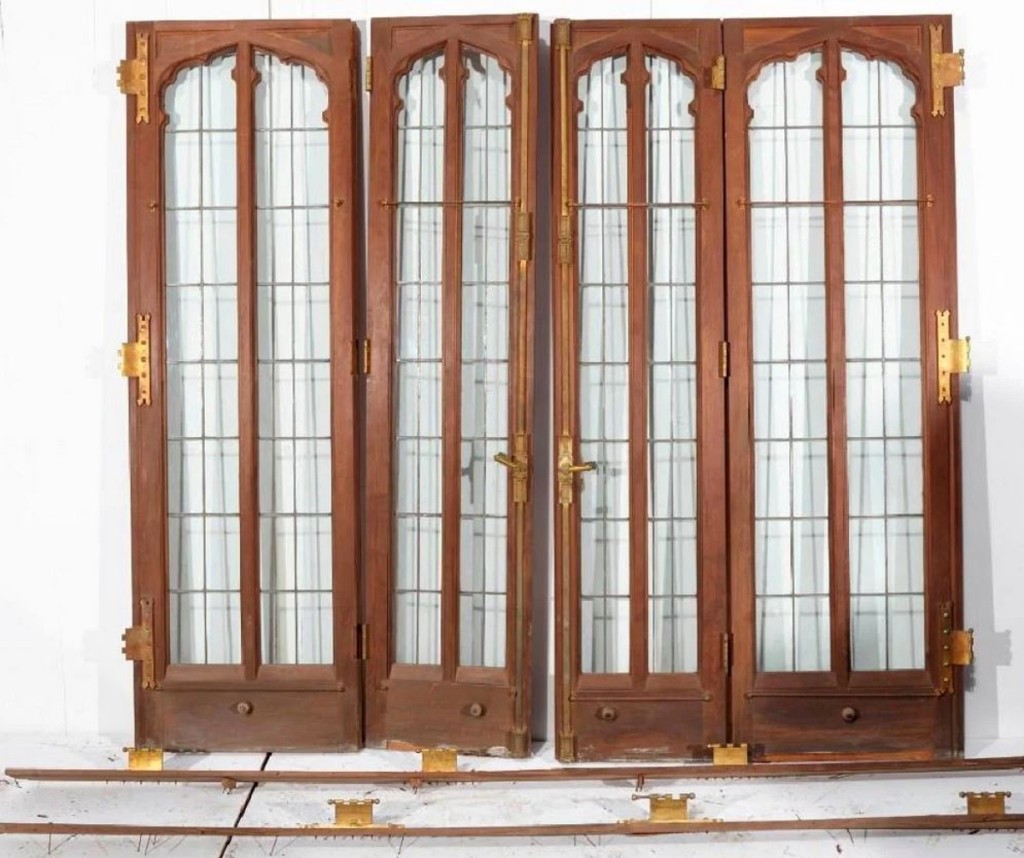
When Frederick Brewster’s “Edgerton” house was dismantled and auctioned in the 1960s, a gentleman bought a portion of it and stored it in his New Haven carriage house until it was brought to sale here. The top lot was this group of four interior walnut leaded glass doors, which took $4,125.
Outsider art was led by works from California artist Jon Serl. The 37¾-by-28¾-inch oil on board, presumably titled “Eaglet,” as is written on the back of the painting, tripled the $2,000 high estimate to land at $6,000. Following closely behind at $5,750 was another Serl work, a 44-by-18-inch oil on canvas titled “Mother Day.” Eddie Arning’s 19-by-24-¾-inch primitive crayon and cray pas on paper work featuring a social gathering would come to rest at the high estimate of $2,000.
Shortly after the auction’s catalog was posted online, bids started rolling in for two Asian lots. An early woodblock print featuring the Great Wave and attributed to Japanese ukiyo-e artist Hokusai went over the $400 high estimate to bring $4,375.
A lot grouping together various pieces of Chinese porcelain cups and snuff bottles would find a star in one small cup featuring a rooster and chicks in a grassy ground with foliate and flowers rising from the floor, Chinese writing on the side. It would bring $2,750 on a $300 high estimate. Hitting right between the $3/5,000 estimate was an antique Japanese samurai armor set with its original wood carrying case. The set would sell for $4,250.
Those last two lots came from an estate out of New Haven where a woman had recently passed away at 100 years old. According to Giampietro, she had collected in her first marriage in the first half of the Twentieth Century. “It’s hard to go wrong collecting back then,” Giampietro said. “And it’s real. Some of the original receipts are from the 1940s.”
“There was a lot of interest in the Native American material,” Giampietro told us after the sale. “In some cases, we had 70 or 80 bids. What always surprises me is the lesser items, the run-of-the-mill Americana, redware or weathervanes, which I kind of glance over. But they brought good money, and I think that’s very encouraging for the market. The challenge is for the average material, and we had good interest for that. We’re all trying to buy the best, but there’s good entry material, too.”
“It was a healthy sale,” Giampietro continued, noting there were no big ticket items. “I would rather have it this way than one $175,000 item and the rest slipping through the cracks.”
For additional information, www.newhavenauctions.com or 203-777-7760.

